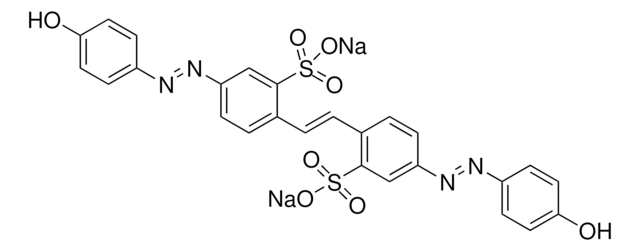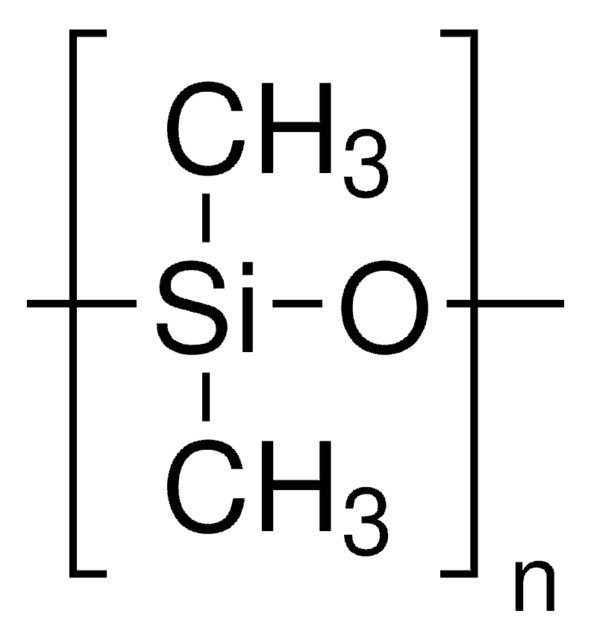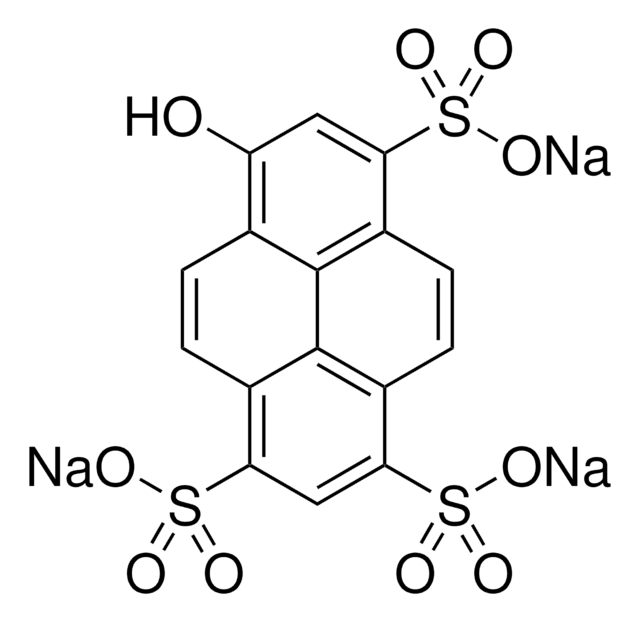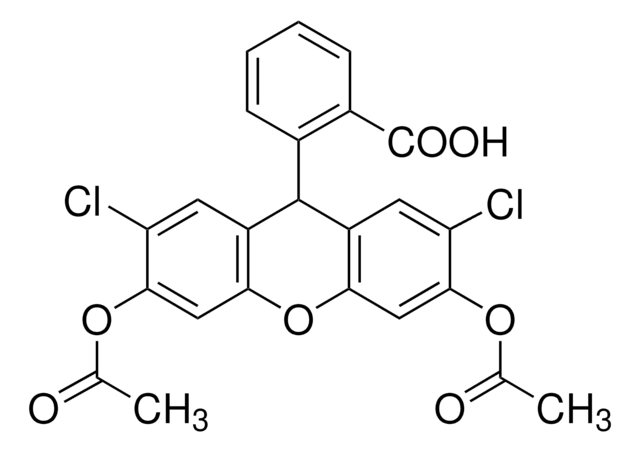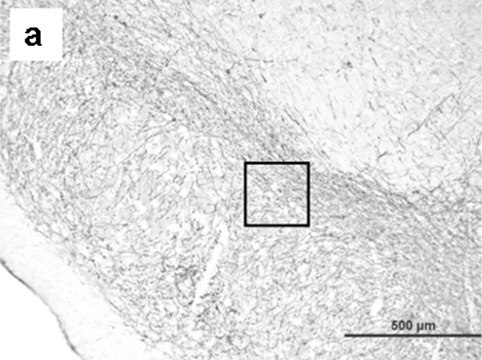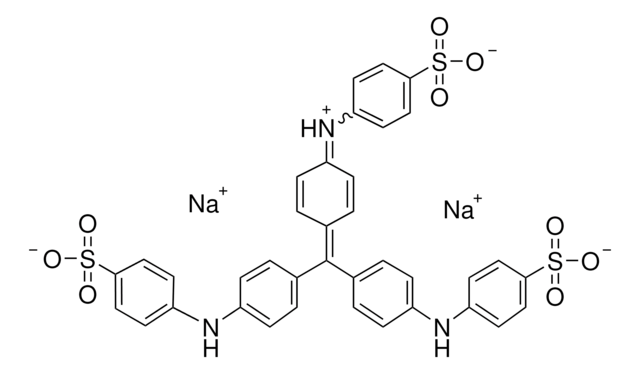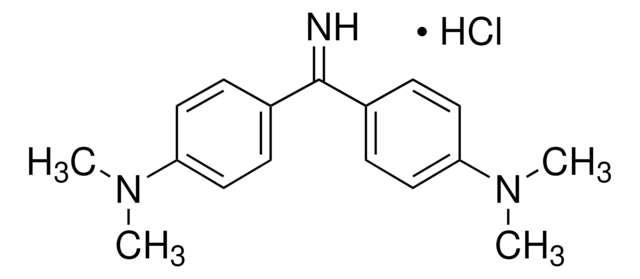378011
Basic Blue 3
Dye content 25 %
About This Item
Empfohlene Produkte
Form
powder or crystals
Qualitätsniveau
Zusammensetzung
Dye content, 25%
mp (Schmelzpunkt)
205 °C (dec.) (lit.)
λmax
654 nm
ε (Extinktionskoeffizient)
≥12000 at 257-263 nm in water at 0.01 g/L
≥4500 at 289-295 nm in water at 0.01 g/L
≥45000 at 651-657 nm in water at 0.01 g/L
Anwendung(en)
diagnostic assay manufacturing
hematology
histology
Lagertemp.
room temp
SMILES String
[Cl-].CCN(CC)c1ccc2nc3ccc(cc3[o+]c2c1)N(CC)CC
InChI
1S/C20H26N3O.ClH/c1-5-22(6-2)15-9-11-17-19(13-15)24-20-14-16(23(7-3)8-4)10-12-18(20)21-17;/h9-14H,5-8H2,1-4H3;1H/q+1;/p-1
InChIKey
IURGIPVDZKDLIX-UHFFFAOYSA-M
Suchen Sie nach ähnlichen Produkten? Aufrufen Leitfaden zum Produktvergleich
Verwandte Kategorien
Allgemeine Beschreibung
Anwendung
Lagerklassenschlüssel
11 - Combustible Solids
WGK
WGK 3
Flammpunkt (°F)
Not applicable
Flammpunkt (°C)
Not applicable
Persönliche Schutzausrüstung
Eyeshields, Gloves, type N95 (US)
Analysenzertifikate (COA)
Suchen Sie nach Analysenzertifikate (COA), indem Sie die Lot-/Chargennummer des Produkts eingeben. Lot- und Chargennummern sind auf dem Produktetikett hinter den Wörtern ‘Lot’ oder ‘Batch’ (Lot oder Charge) zu finden.
Besitzen Sie dieses Produkt bereits?
In der Dokumentenbibliothek finden Sie die Dokumentation zu den Produkten, die Sie kürzlich erworben haben.
Kunden haben sich ebenfalls angesehen
Unser Team von Wissenschaftlern verfügt über Erfahrung in allen Forschungsbereichen einschließlich Life Science, Materialwissenschaften, chemischer Synthese, Chromatographie, Analytik und vielen mehr..
Setzen Sie sich mit dem technischen Dienst in Verbindung.